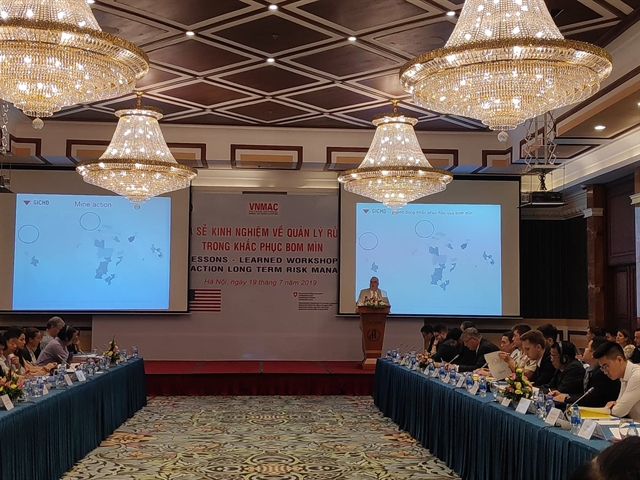 Society
Society


|
| Rob White, representative from Geneva International Centre for Humanitarian Demining speaks at the conference on long-term risk management on mine action on July 19.— VNS Photo Khánh Linh |
HÀ NỘI — Việt Nam needs a transition from a reactive approach on clearing cluster and explosive remnants of war (ERW) to a proactive risk management strategy to better eliminate threats long-term, experts have said.
Speaking at a conference on long-term risk management on mine action this morning, Rob White, representative from Geneva International Centre for Humanitarian Demining said most of the ammunition found today in Việt Nam was manufactured in the 1950s-1960s.
Of those, many have been abandoned and unexploded, posing threats to the community and agencies in charge of bomb and mine clearance.
Việt Nam has achieved significant results in mitigating the consequences of residual explosive remnants since the end of wars. However, it mostly focused on removing and destroying all mines and explosive ordnance from a specified area to a specified depth.
Although clearance work has finished, the threat from explosive remnants such as residual contamination has remained.
This has forced the country to adjust the priorities to better respond to current threats posed by ERW, he said.
A proactive risk management strategy would help address long-term planning requirements.
At the conference, representatives from international organisations shared their experiences on mitigating the consequences of residual explosive remnants.
Việt Nam is highly contaminated by cluster and explosive remnants of war (ERW). In 2014, it was reported that 19 per cent of the country’s land surface area was affected by ERW, and cluster munitions remnants affecting all 63 provinces and cities. — VNS




